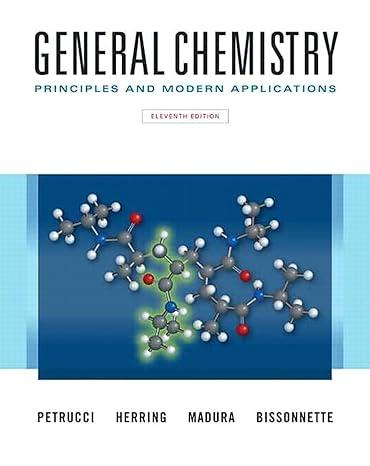All-purpose fertilizers contain the essential elements nitrogen, phosphorus, and potassium. A typical fertilizer carries numbers on its
Question:
All-purpose fertilizers contain the essential elements nitrogen, phosphorus, and potassium. A typical fertilizer carries numbers on its label, such as "5-10-5". These numbers represent the % N, % P2O5 and % K2O, respectively. The N is contained in the form of a nitrogen compound, such as (NH4)2SO4, NH4NO3, or CO(NH2)2 (urea). The P is generally present as a phosphate, and the K as KCl. The expressions % P2O5 and % K2O were devised in the nineteenth century, before the nature of chemical compounds was fully understood. To convert from % P2O5 to % P and from % K2O to % K, the factors 2 mol P/mol P2O5 and 2 mol K/mol K2O must be used, together with molar masses.
(a) Assuming three-significant-figure precision, what is the percent composition of the "5-10-5" fertilizer in % N, % P, and % K?
(b) What is the % P2O5 in the following compounds (both common fertilizers)? (i) Ca(H2PO4)2; (ii) (NH4)2HPO4.
(c) In a similar manner to the "5-10-5" fertilizer described in this exercise, how would you describe a fertilizer in which the mass ratio of (NH4)2HPO4 to KCl is 5.00:1.00?
(d) Can a "5-10-5" fertilizer be prepared in which (NH4)2HPO4 and KCl are the sole fertilizer components, with or without inert nonfertilizer additives? If so, what should be the proportions of the constituents of the fertilizer mixture? If this "5-10-5" fertilizer cannot be prepared, why not?
Step by Step Answer:

General Chemistry Principles And Modern Applications
ISBN: 9780132931281
11th Edition
Authors: Ralph Petrucci, Jeffry Madura, F. Herring, Carey Bissonnette





